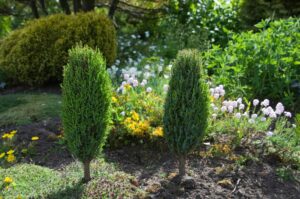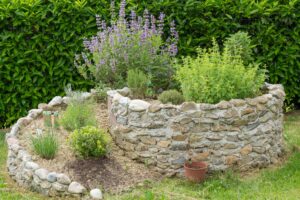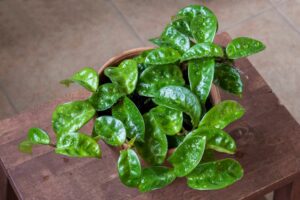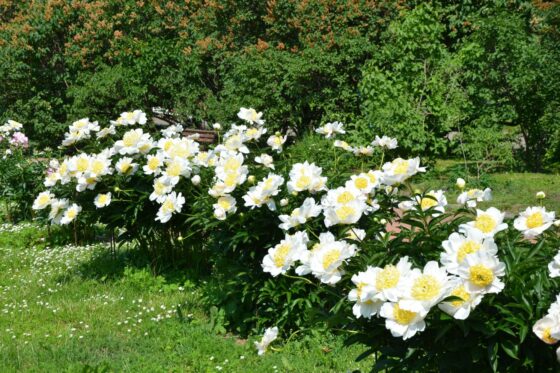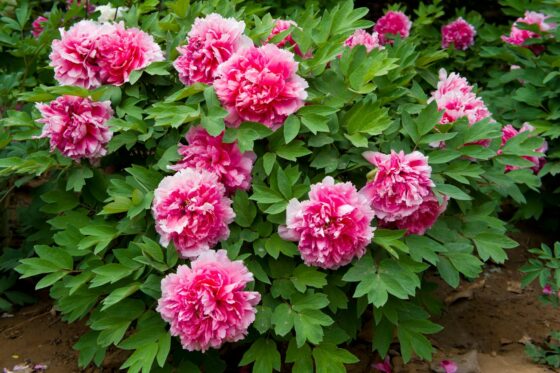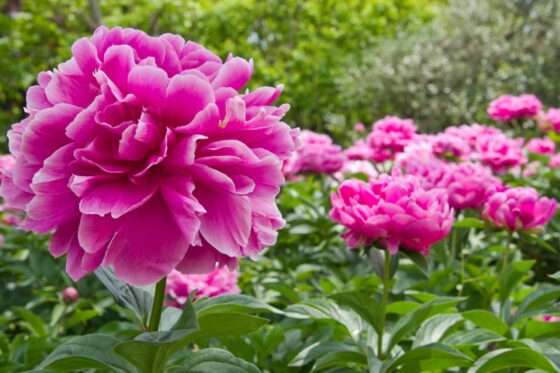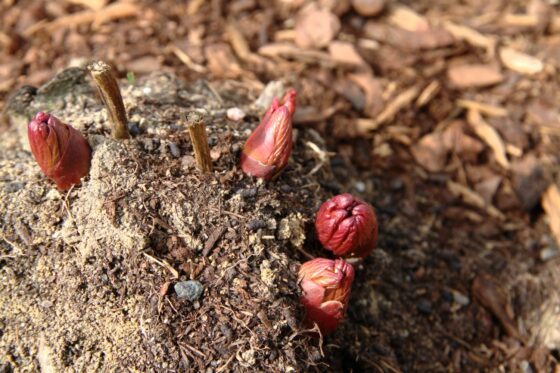Peonies: all about planting, care & pruning
Peonies are among the most beautiful plants in the home garden. From planting peonies to pruning – you will learn everything here.

Peonies (Paeonia) can impress their owners in many ways – whether in the garden as a beautiful perennial, as a shrub with lush flowering or due to its excellent scent. The possibility of placing this plant in a vase on the living room table makes it even more attractive. By knowing about the many different aspects regarding peonies, you can help them bloom beautifully with proper care. This requires some dedication and patience, but the result is well worth it.
Contents
Peonies: properties, origin and meaning
The Paeoniaceae plant family includes only one genus with about 32 species, which have both different flower colours and shapes. These are divided into two separate groups: shrub peonies and perennial peonies. The former originate from the mountain world of China, while perennial peonies are native to China as well as Europe, North Africa and America. Its name goes back to Greek mythology and is based on the physician of the Olympian gods, Paion, as this plant was often used for medicinal purposes in ancient times.
Growth forms
An important factor in the genus of peonies is that there are two types of growth. Since the two may differ in growth as well as maintenance and requirements, this is critical to satisfactory planning implementation.

- Perennial peonies
These do not form woody shoots and, like other perennials, allow the above-ground parts of the plant to die back in autumn. In addition, the height and width of growth may differ from those of the shrub peony. - Shrub peonies
These peonies have woody shoots and thus resemble a classic shrub. However, the space requirements of a shrub peony are often much greater than those of a perennial peony. In terms of flower shapes and colours, there is not much difference, as there is a large number of different cultivated forms.
Flowering time of peonies
The flowering period in Central Europe ranges from April to June. Just before blooming, the flower buds swell to the size of golf balls before the individual flowers delight the garden owner with their blaze of colour for about two weeks.
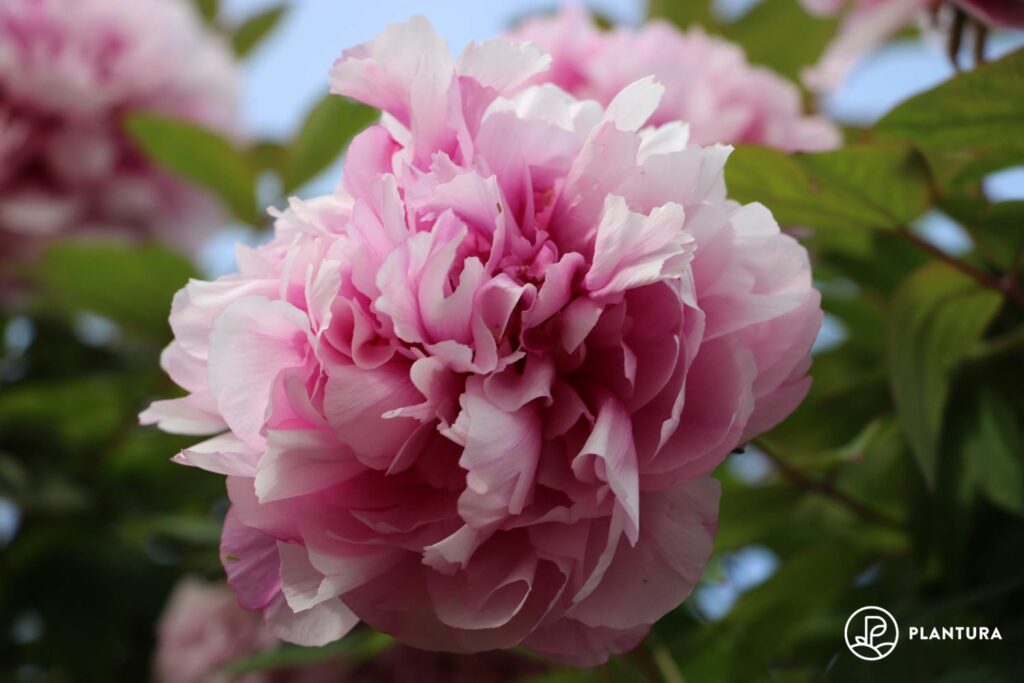
The most popular and beautiful varieties
There is a wide range of species and varieties of the Paeonia genus. Read our expert article on the best peony varieties for detailed descriptions of many species and varieties. This contains both a detailed overview and appealing pictures of each plant.
Propagating peonies
If you want to propagate peonies yourself, it can be done in two different ways: vegetative or generative. In vegetative propagation, the rootstocks of the mother plant are divided and replanted separately. During generative propagation, on the other hand, the mature seeds are sown and thus grown into new specimens. In both approaches there are relevant differences between perennial and shrub peonies in terms of dividing and planting. Also, the two different propagation methods each have advantages and disadvantages. This topic, along with many other useful facts about the propagation of peonies are explained in detail here in our special article.
Planting peonies
In order for a peony to bloom in all its glory, a good knowledge of its preferences in terms of location is immensely important. After all, if it deviates significantly from its natural habitat, the peony (no matter what species or variety) will always languish and never show its full potential.
Where to plant peonies?
The location of a peony should be neither in the sun nor in the shade all day. So, the ideal place is one where the plant gets sunlight for half a day. The soil should be light and never at risk of waterlogging.
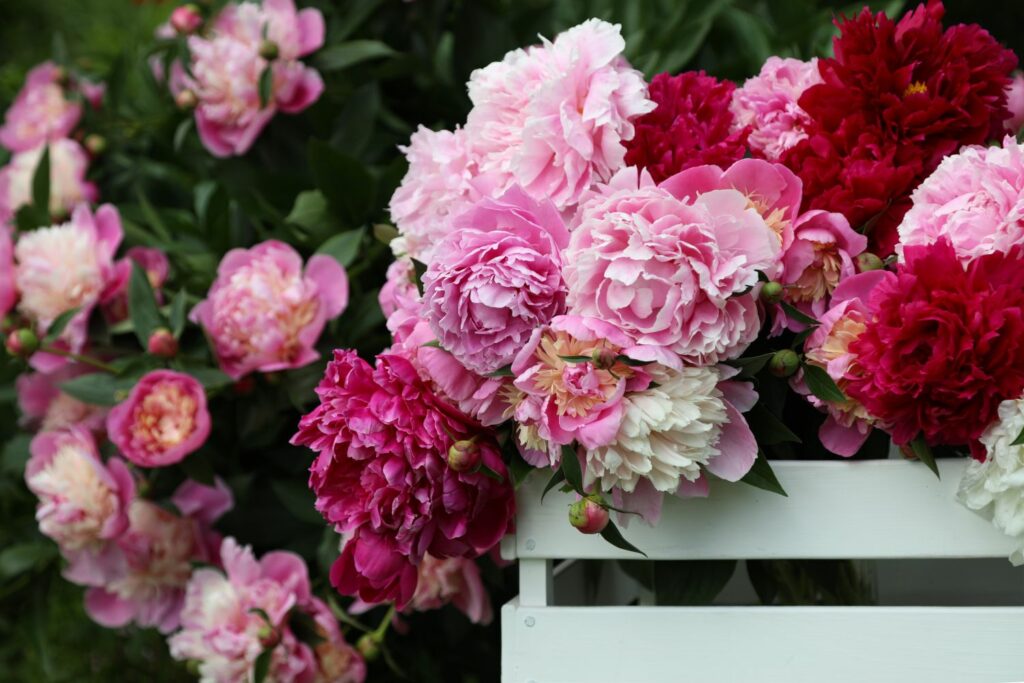
Since there are other important tips, details and important differences between shrub and perennial peonies, we have dedicated a separate article to this topic here.
When is the ideal time?
A simple rule here is to give preference to autumn. The purchased plants are delivered with bare roots and this also ensures that the correct planting depth is maintained. In addition, planting at this time does not hold as much potential danger as in the spring, when the specimen has already formed the first sensitive shoots.
Step-by-step instructions
Even before the spade touches the earth, it is important to give some thought to the upcoming steps. These steps are briefly mentioned below:
- Select the right location in terms of space, light and soil conditions
- Dig the planting hole
- If applicable, prepare the existing soil to accommodate nutrients and drainage
- Observe correct planting depth (caution: differences between shrub and perennial peonies)
For more details on the steps involved in planting peonies, see our special article here.
Peonies in a pot
Here, it is important to remember that peonies in pots only look good for a short time. Therefore, after one growing season you should consider reserving a place for the plants in your garden, otherwise root growth will very quickly reach its limits due to the narrowness of the pot. That being said, a peat-free organic soil like our Plantura Organic Flower Compost is great for peonies.
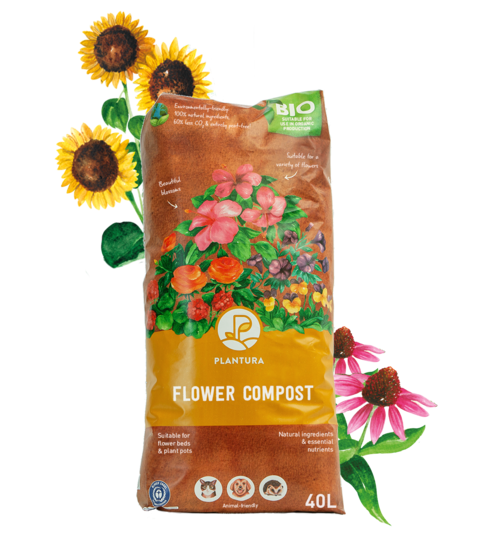
- Perfect for all flowering plants in garden beds & pots
- For beautiful blossoms & healthy plant growth
- Peat-free & organic soil: CO2-saving composition

The right substrate
The planting substrate has similar properties to the natural soil in which peonies thrive. Therefore, the same applies here: waterlogging is deadly. You should be sure to provide functional drainage inside the pot. That being said, a peat-free organic soil is great for peonies.
Transplanting
Everything that grows and thrives develops ever greater demands on light, water, nutrients and space. Changes such as competition or foot traffic nearby also have a major impact on the plants in their location. External factors may include people passing close by, which causes damage and can lead to infections. In this case, consider transplanting the plant to a new location.
Peonies: why transplant them?
In most cases, the need to replant arises from the lack of space that occurs when the peony grows significantly larger than originally planned. Other reasons could be lack of light or water, for example due to surrounding plants that have also grown very large. This will be seen if the peony loses its blooms with each passing year or requires watering often, despite the wet weather.
How to transplant?
Here is a summary of the main steps for digging up and replanting peonies.
- Carefully dig up the peony
- Remove root areas from the soil with water
- Cut away withered parts of the root
- Choose an appropriate new location
- Dig a planting hole and prepare the soil if required
- Plant peony in a new location

Helpful tips on exactly how to follow these steps can also be found in our article on transplanting peonies.
Fertilising peonies
Peonies offer such great potential to enhance one’s garden that it would almost be a shame not to take advantage of them. Not only professionals succeed here; this can also be successfully managed by amateur gardeners provided that you note a few facts about proper fertilising.
When and how often to fertilise?
If you want to tap into the aforementioned potential of a peony, this probably also has its (nutrient) price, of course. That is certainly what everyone would think at first; however, the plants are satisfied with just a few applications of fertiliser. The important factor here is the right time of fertilisation. This falls in the spring in March and then again in August.
Fertilising peonies: which fertiliser is suitable?
Since peonies are one of those plants that are satisfied with fewer nutrients, it is advisable not to use a rich mineral liquid fertiliser. A plant-based slow-release fertiliser such as our Plantura Flower Food is the best option here for both plant and environment.
Find out how to provide your peonies with ideal nutrients in our expert article on fertilising peonies.

- Perfect for flowering plants in the garden & on the balcony
- For healthier plants with beautiful & long-lasting blossoms
- Long-lasting fertiliser that is free from animal products - child & pet friendly
Pruning peonies
By pruning, it is possible to change the shape of the plant or even create new growth stimuli. There are several pruning measures. Each one has a specific purpose and likewise its optimal timing.

The ideal time
The season to prune peonies is between summer and winter. The exact time depends on the type of pruning and is therefore during the period from June to December.
Pruning peonies: method
Different approaches to maintenance and topiary vary depending on whether dead plant parts are to be removed or pruning is to be done at ground level. The latter is quite rare, but can be quite advantageous if the growth of the peony is very puny. In addition, the pruning methods of perennial peonies differ from those of shrub peonies, which should always be considered in any case.
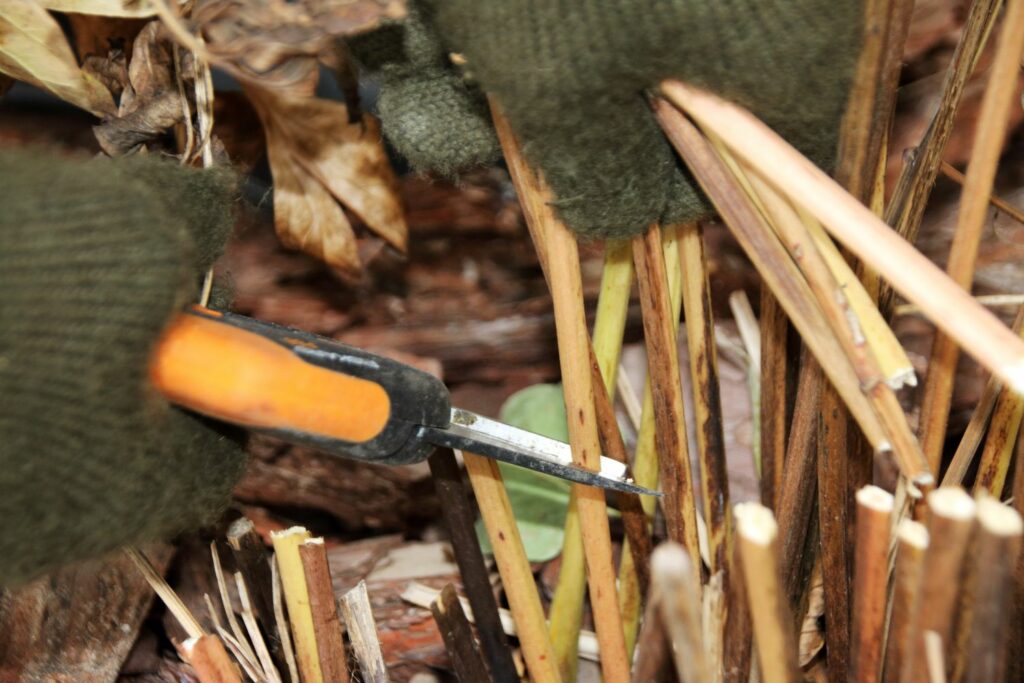
More tips on how to perfectly prune your peonies can be found here.
Peonies in a vase
Like many other plants, peonies can be very good for decoration as cut flowers. With their especially attractive flower shapes and colours, this plant can greatly enrich life at home. The most important thing when pruning is to use a sharp cutting tool because the stems in particular can be crushed very quickly by a blunt tool and the cut will be messy.

More about when to harvest the flower stems and other tips about peonies for the vase can be found here.
Are peonies poisonous?
The purpose of the peony as a medicinal plant already suggests that there are substances within the peony that can have certain effects on the human body.





